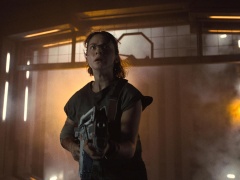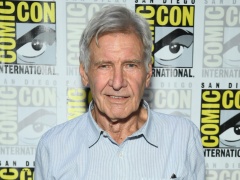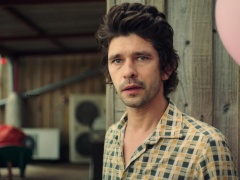
SPOILER alert:This article discusses plot points from “The Piper.”
Horror Film School is a feature in which talent in front of and behind the camera share the ins and outs of creating the biggest onscreen scares.
Icelandic director Erlingur Thoroddsen‘s latest film is “The Piper,” starring Charlotte Hope and the late Julian Sands. The indie horror feature follows a musician hoping to finish a lost piece of music that may conjure up the evil entity that was the inspiration for the dark German legend “Pied Piper of Hamelin.” From a fiery opening to a enigmatic midsection to a bonkers ending act that evokes VHS-era supernatural slashers like “A Nightmare on Elm Street” and “Wishmaster,” Thoroddsen’s film works because of its clever pacing, walking a tightrope between thrills and mysteries. The director spoke to PvNew about how he found the perfect pace for “The Piper.”
DO tease out interesting specific details to engage audiences, but DON’T give away the whole plot.
“Mysteries are hard to construct because you don’t want to give too much away, but you want to give enough away at certain points to keep people involved. I’m a big horror movie fan and I’m very familiar with the format. When I was writing, I had to trust my instincts, but then move the pieces around to make it all work in the end. Most filmmakers know the script can be a little overwritten — you put too much in there and when you film and edit it, you think, ‘We don’t need people to say this’ or ‘We don’t need this scene because we get the information.’ You have to trust that the information is being presented visually in a way that keeps people engaged.”
DON’T forget that the audience is there to be scared.
“A lot of the set pieces and scares that are in the final film have been there since the beginning. But there was a time when, once we had a green light and were actively developing this, I remember sitting with my producer and saying, ‘OK, maybe this section needs a jolt.’ We tried to identify places like that, but it always had to feel natural. We didn’t want to just have a cat jump out of the shadows.
“You do hear about people — producers especially — that want a big scare to happen every certain number of pages. Even though it wasn’t quite that mathematical for us, I’m aware of it. You want the film to play to an audience, you don’t want to disappoint them. So we were aware of that, but always trying to keep it as organic to the story as possible.”
DO be strategic when showing glimpses of your Big Bad.
“I’m a little old school when it comes to these things. I’m inspired by ‘Jaws’ and the original ‘Nightmare on Elm Street’ where you see the monster a little bit here, a little bit there, but they’re in shadows. We don’t see too much. I wanted to keep it that way for the Piper where he’s a presence, but not too overt. It also felt like the right thing to do because of where I wanted to take the film by the end, where everything explodes.”
DON’T be too much of a control freak while editing.
“Everything that I’d done previously I’d cut myself because they were all micro-budget things. I couldn’t afford an editor. So I have a bit of an editing brain. When I’m writing and shooting, I know how I want to cut things. But at the same time, when you’re the writer and the director, you can get stuck in the weeds — you can’t see the forest for the trees. I do love to have an outside pair of eyes watching it and getting a a different sense of how the story should flow.
“On ‘The Piper,’ we had a great editor named Michael Duthie. Sadly, he passed away two years ago. But he was a veteran editor — for example, he edited ‘Stargate’ in the ’90s. So he came into it with decades of experience and I just let him do the assembly while I was still shooting. A week after we finished shooting, I sat with him and we watched the assembly together. The assembly is always a bit difficult to watch because you see the ‘warts and all’ version of the film. But then you roll up your sleeves and start going scene by scene: ‘OK, what do we want to get out of this scene?’ You try to chisel the pieces away until you have something very solid.
“It was a great experience for me to try things out that I had in mind. Sometimes they worked and sometimes they didn’t. And then he would come in and do his version of it, and most of the time it was much cooler and better than the stuff I had in mind. So it was a really fun, fruitful collaboration.”
DO trust your instincts with creative decisions.
“Listen to what the voice inside your head is telling you, because sometimes things that seem too good to be true are. Sometimes taking a chance on something is the right thing to do. You can get advice from plenty of people, but ultimately you are the person who has to devote years of your life to this project. This is a project that’s going to stay with you forever, so look deep within yourself and figure out what the best thing for you to do and trust your instincts. The decisions you make need to come from a place of passion and good storytelling, and not just fear or outside pressure to make the thing fit into something else. If you let the pressure affect you too much, things can get out of hand very quickly.”
DON’T forget to lead your audience on the ride, even if things get crazy.
“There were two things we made sure to do to get the audience to the end. First, lookswise, even though the film wasn’t super high budget, we tried to shoot it in a way that felt grand and old fashioned, with sweeping wide shots to give it a sense of scope. once you get used to that idea, then when it does go crazy at the end, it feels like it belongs in the world.
“The second thing, from more of a writer’s perspective, is opening with a big death. It quiets down after that, but I think that giving people a taste at the very beginning, from then on each scare is hopefully a little bit bigger. The film organically grows as it goes towards the climax.”
“The Piper” is now in theaters and available on demand.






